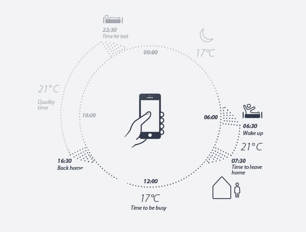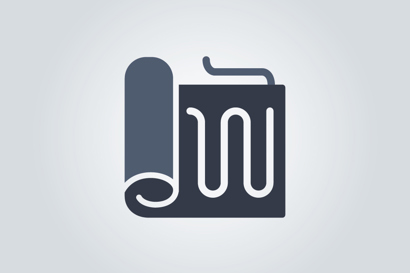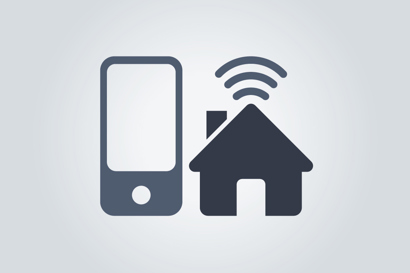
Quick-responding system
with precise room temperature control for the highest possible energy efficiency
What is electric underfloor heating?
Electric floor heating consists of two main elements: a heating element, which can be a thin mat or a cable; and a thermostat with temperature sensors. Electric heating mats or cables can be installed under any floor type, and are suitable for new builds, retro fits or renovations. It can be an energy-efficient heating option, especially when it uses energy generated by photovoltaic cells, or solar panels. And that’s just one way that electric underfloor heating can maximize energy efficiency.
Efficient use of energy for the highest comfort level
Quick warm-up time and heating schedule



Electric underfloor heating benefits






Room- or zone-based heating control
With electric underfloor heating, users can regulate the temperature in each room independently. When no one’s using a room or zone, they can switch off heating to that specific room, which saves money, prevents wasted energy and ensures the highest level of efficiency.
Integrated timer function
The thermostats feature an integrated timer function, which means users can switch to “low-cost electricity” mode, so they only use heating when electricity costs are low. The thermostats also react to additional heat sources, such as the sun, so they can automatically adjust the room temperature to external conditions.

Fits your rhythm and reduces energy costs
Newer thermostats even adapt to users’ habits and learn when to turn the heat on and off, so heating is only available when needed.
The most comfort with the least energy
The combination of the heat distribution from the floor and the precise temperature control with the thermostat mean users can reduce a room’s temperature by 1-2° Celsius when compared to traditional radiator heating, without reducing the room’s comfort level. For a multi-tenant building, this would amount to a 20% reduction in total energy loss.
Electric underfloor heating also gives the highest possible heat efficiency, as it converts 99% of the energy the system consumes into heat.

Solar-powered heating
Find out how the combination of electric underfloor heating and photovoltaics met the energy efficiency requirements for an Energy plus, near-zero housing complex in Koblenz, Germany.
Simple, low-cost installation and maintenance
Beyond the energy efficiency related benefits, electric underfloor heating offers additional advantages for single- and multi-tenant building owners. For example, builders can use lighter floor construction with electric underfloor heating. While water-based floor heating typically requires a 60-100 mm concrete layer on top of the tubes, electric heating mats are from 2.5 - 4.5 mm thick and can be placed just underneath the floor covering.
Since electric underfloor heating only requires two elements, the heating element and the control unit, the installation process is quicker and less complex than with other heating solutions. From a resident’s perspective, an invisible, no-noise heating system gives increased flexibility in terms of saving space (no need to plan around bulky radiators) and interior design. And electric underfloor heating gives a greater peace of mind because there’s no possibility of frost, leakage and related floor damage.
The heating mat’s thickness also means it can be installed in a house renovation without destroying the existing floor. And the relatively low-level of floor thickness makes electric underfloor heating an ideal solution for multi-story buildings, where low building height is an advantage, and the size of the horizontal division makes a difference.
Product range
-
if (isSmallPicture) {


 Threaded pneumatic cylinders - T series
Threaded pneumatic cylinders - T seriesVickers by Danfoss pneumatic threaded T series cylinders feature robust capabilities to meet the needs of waste processing, material handling, machine tools and general machinery applications. The compact envelope, including threaded body and heads, eliminates the need for tie-rods.
-
if (isSmallPicture) {


 Subsea Oil and Gas
Subsea Oil and GasDiscover reliable Subsea Oil & Gas solutions: BOP bundles, high-pressure hoses, IWOC, & more for safety in challenging environments.
-
if (isSmallPicture) {


 Slip-in Cartridge Valves
Slip-in Cartridge ValvesVickers by Danfoss slip-in cartridge valves excel in high-flow systems. Engineered to meet the demands of a new generation of hydraulic-operated machinery, SiCV valves enable the creation of faster, more efficient and compact hydraulic systems.
-
if (isSmallPicture) {


 Remote Control Receivers
Remote Control ReceiversOur receivers are customizable to meet the varied mounting and wiring requirements of applications such as cranes, construction vehicles, or marine vehicles. Many features are available to ensure the reliable input of transmitter signals and output of control signals.
-
if (isSmallPicture) {


 PLUS+1® CS100 Cellular Gateway and Data Services
PLUS+1® CS100 Cellular Gateway and Data ServicesOur PLUS+1® CS100 cellular gateway and data services provides high quality, plug and perform ease of installation, and cost effective solutions to fit the remote monitoring needs of today’s mobile machines.
Related applications
-
if (isSmallPicture) {


 Electric floor heating
Electric floor heatingElectric underfloor heating for all types of floors
Electric heating is an energy-efficient and environmentally friendly floor heating solution. It is flexible for new build homes and renovations for both wet and dry installation.
Case studies
Coming soon...
Coming soon...




















